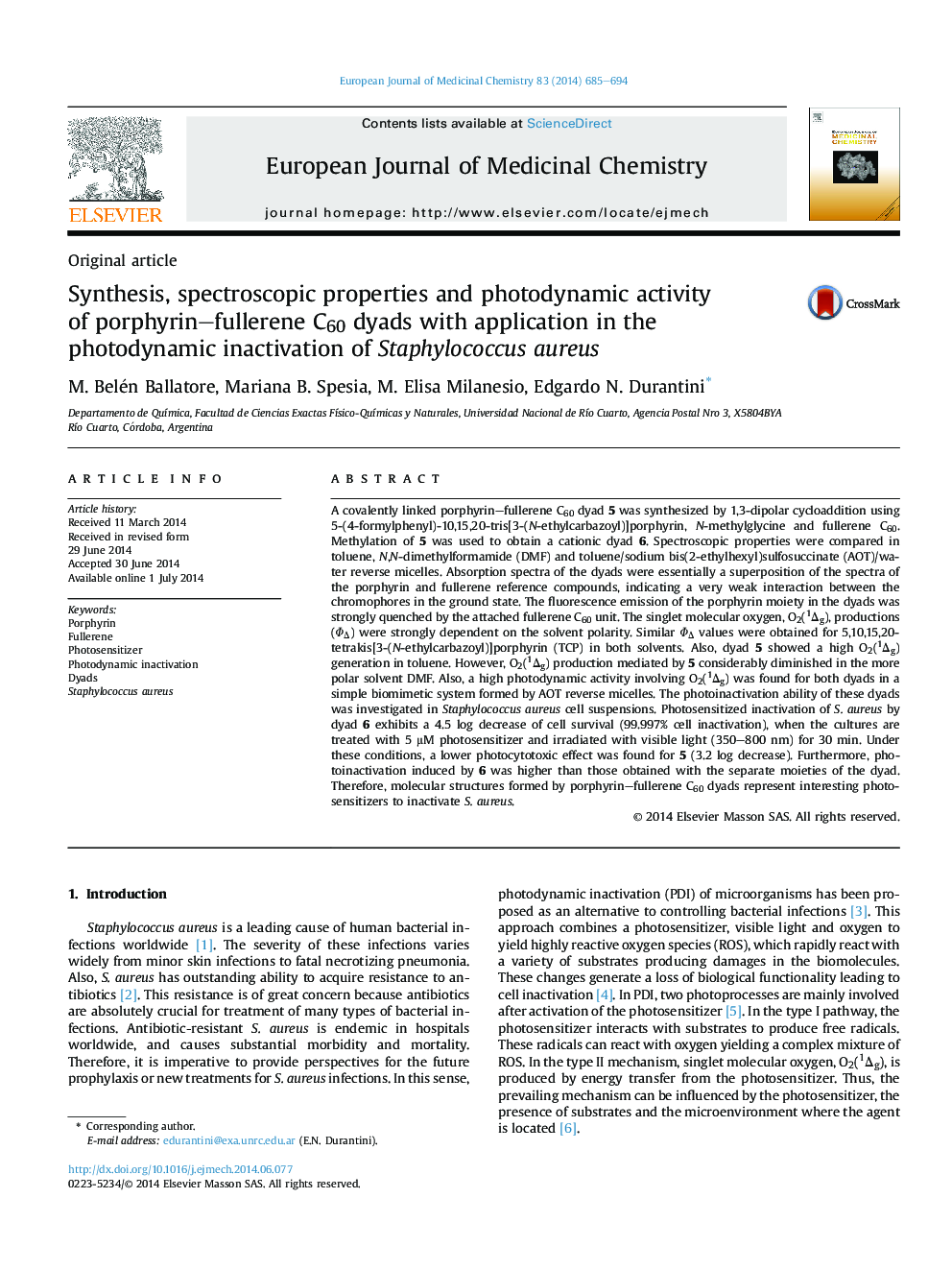| Article ID | Journal | Published Year | Pages | File Type |
|---|---|---|---|---|
| 1392465 | European Journal of Medicinal Chemistry | 2014 | 10 Pages |
•Novel porphyrin–fullerene C60 dyads were synthesized as photodynamic agents.•Dyads present high capacity to produce photoinduced charge-separated states.•The singlet molecular oxygen productions were strongly dependent on the solvent polarity.•An amphiphilic cationic dyad was more effective in photoinactivation of Staphylococcus aureus.
A covalently linked porphyrin–fullerene C60 dyad 5 was synthesized by 1,3-dipolar cycloaddition using 5-(4-formylphenyl)-10,15,20-tris[3-(N-ethylcarbazoyl)]porphyrin, N-methylglycine and fullerene C60. Methylation of 5 was used to obtain a cationic dyad 6. Spectroscopic properties were compared in toluene, N,N-dimethylformamide (DMF) and toluene/sodium bis(2-ethylhexyl)sulfosuccinate (AOT)/water reverse micelles. Absorption spectra of the dyads were essentially a superposition of the spectra of the porphyrin and fullerene reference compounds, indicating a very weak interaction between the chromophores in the ground state. The fluorescence emission of the porphyrin moiety in the dyads was strongly quenched by the attached fullerene C60 unit. The singlet molecular oxygen, O2(1Δg), productions (ΦΔ) were strongly dependent on the solvent polarity. Similar ΦΔ values were obtained for 5,10,15,20-tetrakis[3-(N-ethylcarbazoyl)]porphyrin (TCP) in both solvents. Also, dyad 5 showed a high O2(1Δg) generation in toluene. However, O2(1Δg) production mediated by 5 considerably diminished in the more polar solvent DMF. Also, a high photodynamic activity involving O2(1Δg) was found for both dyads in a simple biomimetic system formed by AOT reverse micelles. The photoinactivation ability of these dyads was investigated in Staphylococcus aureus cell suspensions. Photosensitized inactivation of S. aureus by dyad 6 exhibits a 4.5 log decrease of cell survival (99.997% cell inactivation), when the cultures are treated with 5 μM photosensitizer and irradiated with visible light (350–800 nm) for 30 min. Under these conditions, a lower photocytotoxic effect was found for 5 (3.2 log decrease). Furthermore, photoinactivation induced by 6 was higher than those obtained with the separate moieties of the dyad. Therefore, molecular structures formed by porphyrin–fullerene C60 dyads represent interesting photosensitizers to inactivate S. aureus.
Graphical abstractThe paper reports the synthesis and photodynamic activity of novel porphyrin–fullerene C60 dyads in different media and in Staphylococcus aureus.Figure optionsDownload full-size imageDownload as PowerPoint slide
